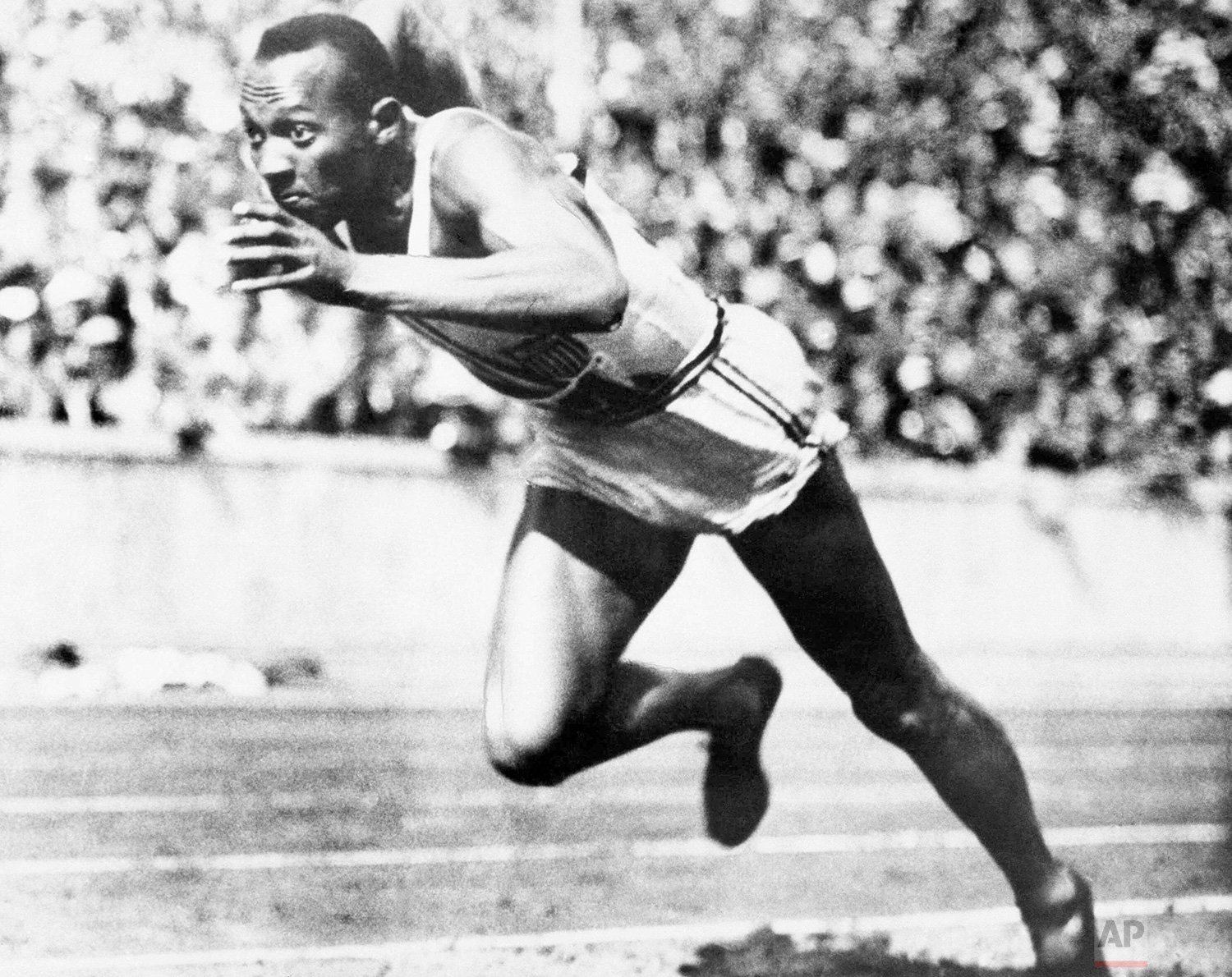90 years of Wirephoto

Wirephoto, developed by The AP, was the most transformational technology since the telegraph. AP will celebrate Wirephoto’s 90th anniversary throughout January 2025.
When renowned aviator Wiley Post and actor Will Rogers died in a plane crash, Wirephoto captured the scene. When the airship Hindenburg exploded, Murray Becker’s picture moved on Wirephoto. When Jesse Owens took four gold medals at the Olympics in Berlin in August 1936, Wirephoto transmitted the images. AP promoted and sold its Wirephoto service over many decades.
By 1960, it had been adopted overseas.
Kent Cooper, AP’s general manager from 1925 to 1948, had been planning this day for a decade. He made his first pitch for a telegraphic photo service to the AP board of directors in 1926, almost two years before the AP hired its first photographers. Cooper’s dream for a nation-wide system of photo transmission over leased wires, available 24-hours a day, was about to be realized. In the early hours of January 1, 1935, Cooper stood by to witness the first photo transmission over the 10,000-mile network.
Associated Press General Manager Kent Cooper, second from left, Manilla newspaper publisher Alejandro Roces, Jr.; and Photo Editor Norris Huse, inspect the Wirephoto machine at The Associated Press office in New York on Dec. 26, 1934. Man at far left is unidentified. (AP Photo)
AP chief engineer Harold Carlson, left, and photo printer Eddie Nittoly, right, attend to Wirephoto equipment in the Associated Press' photo department in New York headquarters in 1935. (AP Photo)
Illustration by Henry C. Barrow showing the AP news staff gathered around the Wirephoto equipment on January 1, 1935 as the first photo was transmitted by wire to AP member newspapers. (AP Photo/Corporate Archives)
As news staff and technicians gathered round the newly installed Wirephoto equipment in the AP newsroom, Harold Carlson, AP’s chief engineer, placed a photo on the cylinder and alerted twenty-five cities: “This is New York calling all points. The first picture will be a shot of the plane survivors just rescued in the Adirondacks. Are you ready?” Under the hood of the Wirephoto transmitter, a photocell scanned the picture as it turned, converting it into electronic impulses which were flashed to the receiving unit and reconverted into a negative that was then printed. The transmission took less than 15 minutes. The obstacles of time and distance that had prevented pictures from arriving alongside words had been overcome.
Rescuers with survivors of the plane which went down in the Adirondacks are shown on Dec. 31, 1934. Left to right are, R. W. Hambrook, passenger, John Pertrello, J. W. Brown, Dale Dryer, Lester Pertrello and Floyd Kreutzer. The Pertrellos and Kreutzer are rescuers. (AP Photo)
The wreckage of a small plane lies in a wooded area near Morehousville, N.Y., Dec. 31, 1934 after a crash landing three days earlier. The four people aboard were reportedly not seriously injured. (AP Photo)
Jesse Owens competes in one of the heats of the 200-meter run at the 1936 Olympic Games in Berlin on Aug. 14, 1936. (AP Photo)
The German dirigible Hindenburg crashes to earth, tail first, in flaming ruins after exploding on May 6, 1937, at the U.S. Naval Station in Lakehurst, N.J. (AP Photo/Murray Becker)
Clipping from the Philadelphia Bulletin, from Dec. 31, 1934, showing the AP Wirephoto network. (AP Photo/Corporate Archives)
Diagram showing how photos are received and transmitted via AP Wirephoto, circa 1935-1936. (AP Photo/Corporate Archives)
The Age of Pictures
From a Los Angeles Times Editorial, January 1, 1935, “One of the longest forward steps in the history of newspaper-making since the invention of the linotype will be taken today with the formal launching of the Wirephoto Service of the Associated Press, itself the world’s greatest organization for the gathering and dissemination of news and news photographs.”
The Wirephoto service had a spectacular debut with major beats on the biggest stories of 1935.
Bruno Hauptmann trial in Lindbergh baby kidnapping
Hauptmann was indicted in the Supreme Court, Bronx County, N.Y., on charges of extortion on Sept. 26, 1934 and on Oct. 8, 1934, in Hunterdon County, in Hunterdon County, N.J., he was indicted for murder of baby Charles Lindbergh Jr.
Col. Charles Lindbergh testifies during Bruno Hauptmann trial in Flemington, N.J., on Jan. 3, 1935. (AP Photo)
Wiley Post-Will Rogers Crash
AP published the first images of the crash that killed famed aviator Wiley Post and Will Rogers, humorist, actor and keen observer of American life. Film shot at the scene by locals was sent to Fairbanks on the same plane with the victims and flown onward to San Francisco for processing and distribution over the Wirephoto network.
Will Rogers – Wiley Post plane crash at Point Barrow, Alaska on Aug. 15, 1935. (AP Photo)
1935 World Series
Some newspapers were on the street with pictures of the 1935 World Series between the Detroit Tigers and the Chicago Cubs before the game ended. On opening day, 24 minutes elapsed between the time the umpire called “play ball” and the first action picture started moving over the Wirephoto network.
Freddie Lindstrom tried to steal second in the Cubs' half of the third inning with the count three and two on Gabby Hartnett but was put out by Charlie Gehringer when Hartnett fanned and Mickey Cochrane threw fast to second base during the first game of the World Series in Detroit, Oct. 2, 1935. (AP Photo)
The problem was no longer how to transmit photos quickly but how to get them to a Wirephoto sending bureau. By 1936 Carlson had developed a portable Wirephoto transmitter. Carlson described early efforts as more transportable than portable, but in March 1936, Carlson took the equipment to Pittsburgh with AP Engineer Jim Barnes and transmitted photos of the devastating flooding that had hit the area. He explained how it was done in the February 1947 issue of AP World:
“It required two light planes to carry it, after a little hack-sawing had reduced some of it to proportions that would fit into the planes.”
AP Wirephoto transmitter in AP's Engineering Laboratory, 1936. The transmitter was transported to Pittsburgh in 1936 by AP Chief Engineer Harold Carlson and Engineer Jim Barnes who used it to transmit photos of the Pittsburgh flood in March of that year, the first photos ever sent by portable Wirephoto. (AP Photo/Corporate Archives)
As flood waters roll away, workers tackle the job of clearing debris from the street-level floor of the large department store Joseph Horn Company in Pittsburgh, March 22, 1936. (AP Photo)
AP’s chief engineer Harold Carlson works on a portable Wirephoto machine, 1936. (AP Photo)
Chief Engineer Harold Carlson checks the Associated Press Wirephoto machine on May 2, 1936 at the Kentucky Derby in Louisville, Ky. The AP set up a portable Wirephoto machine in a small structure on the roof overlooking the racetrack a year after launching the world's first network to transmit pictures by wire. Wirephoto allowed newspapers to print pictures from afar side by side with the news, rather than wait two to four days for mailed photographs. (AP Photo)
AP Chief Engineer Harold Carlson kneels on the roof overlooking the race track, May 1936, at the Kentucky Derby in Louisville, Ky. Carlson transmitted photos from the track using AP Wirephoto equipment. (AP Photo/Corporate Archives)
Encouraged by their success in Pittsburgh, Carlson and his team in the AP Engineering Laboratory, which included engineers Konstantin “Wally” Woloschak and Charley Hubley, worked on devising smaller and lighter equipment that could be used in the field. A 1941 AP promotion touted the latest portable Wirephoto transmitter which could be carried in a suitcase and weighed only 65 pounds.
Associated Press advertisement promoting the new portable Wirephoto transmitter in 1941. (AP Photo/Corporate Archives)
The AP Wirephoto machine aids in solving a murder in Paramount Pictures' "Murder With Pictures," starring Paul Kelly, left, and Gail Patrick, center. This scene, directed by Charles Barton (kneeling), was filmed in the Wirephoto room of AP's Los Angeles bureau in 1936. (AP Photo/Corporate Archives)
Text written by Francesca Pitaro and Valerie Komor, AP Corporate Archives.
Curation by Julia Weeks.
Written content on this post was not created by the editorial department of AP.

